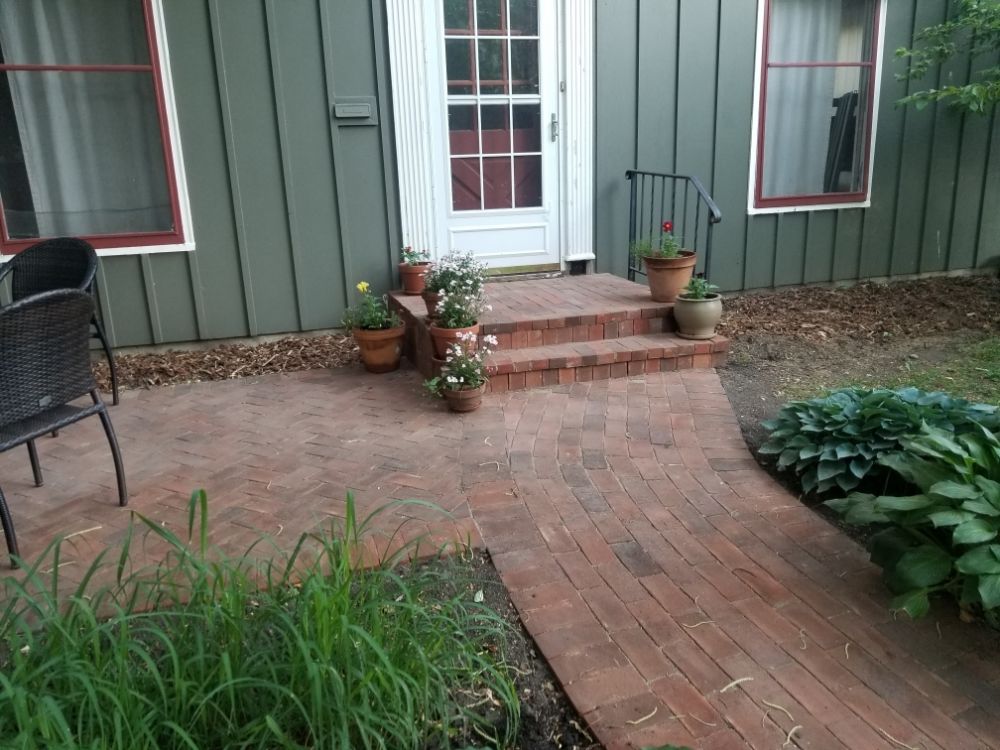
Bee lawns are taking root in landscapes around Minnesota. As a pollinator lawn option, the bee lawn is a fabulous choice. Bee lawns have white clover, self-heal, creeping thyme, and fescue grass and can feed over 55 species of Minnesota native bees. The bee lawn is a tough, walkable, drought resistant, no-mow pollinator lawn option. Adding in low-growing native plants such as prairie pussytoes, native violets, blue-eyed grass, and yarrow millefolium to your bee lawn will take it to the next level of pollinator lawn status by feeding a wider range of bees, moths, butterflies, and other insects.
 The sunny side of your landscape
The sunny side of your landscape
Pollinator pocket gardens are a wonderful way to grow a more productive pollinator landscape. 100 to 1,000 square feet of tall native plants placed in a sunny garden setting can serve hundreds of species of vital native insects. This is a place to include pollinator landscaping favorites like tall prairie grasses including big bluestem, switchgrass, and June grass. Bring the monarch butterflies into your pollinator landscape with meadow blazing star, Joe Pye weed, woodland sunflower, and of course all the native milkweed varieties. Milkweeds are important because they feed so many types of Minnesota pollinators in addition to monarch butterflies. Make sure your pollinator landscaping design includes common milkweed in garden areas, butterfly weed in hot sunny spots, swamp milkweed in the rain garden or shoreline, and poke milkweed in your pollinator shade gardens.
Find a shady spot for pollinators
Shady pollinator gardens are a wonderful addition to any well treed space. Minnesota native shade plants bring butterflies, bees, and birds to the quiet corners of your garden. Using an exciting variety of Minnesota native meadow and woodland perennials such as Solomon’s seal, Canadian anemone, wild strawberry, trillium, Virginia bluebells, Canadian ginger, Pennsylvania sedge, and all your favorite native ferns will provide a shady pollinator landscape understory that will cover the ground in green and leave you with a low-maintenance shade garden. Shade loving native shrubs such as serviceberry regent, pagoda dogwood, and leatherwood are perfect understory plantings in the pollinator friendly landscape.
Prairie Meadows
Prairie meadows are increasing in popularity as a low-maintenance pollinator landscaping option. Eliminating the entire lawn and replacing it with native prairie plantings can save hundreds of hours of lawn maintenance time per year. Using spreading native grasses, perennials, and shrubs as well as low growing ground cover perennials in a prairie meadow style landscape can have the amazing aesthetic of country life in the middle of the city. Bring in birds and butterflies with a prairie meadow pollinator landscape.
Grow a food forest
Food forests can take your pollinator landscape to new heights. Using tall blooming edible native trees and shrubs such as basswood, raspberry, serviceberry, and hazelnut around the perimeter of your landscape while covering the remainder in native perennials will fully realize your landscapes potential to provide for pollinators. Include native vines such as riverbank grape and clematis ‘Virgin’s bower’ to find those in-between canopy spaces and fill them with blooms and fruits for people and pollinators.
Pollinator landscaping is best when it blooms through the growing season, has a wide variety of plants, and has multiple canopy layers to protect the soil, form habitat for wildlife, and feed pollinators. If you’ve been searching for pollinator landscapers near me, look no further. We’re happy to have helped thousands of clients transform their outdoor spaces into pollinator lawns and landscapes.











